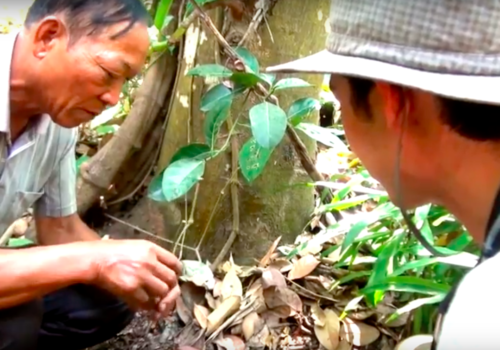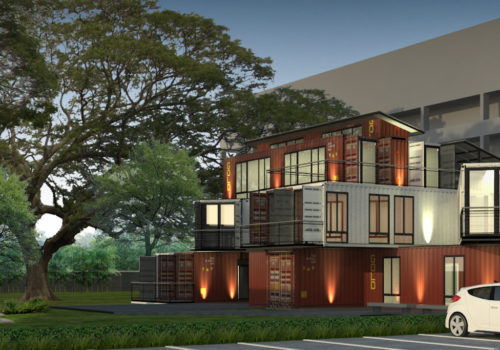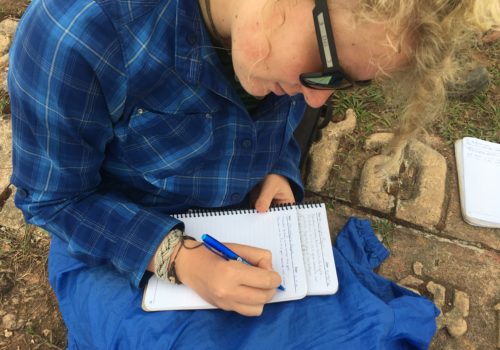We sent this out as an email to our study abroad community mailing list of partner schools, faculty, alumni and others, and wanted to put it up on our blog so folks can find it if they are looking for more information.
As I’m sure all of you are aware, the on-going protests in Bangkok have turned violent, and the US State Department has issued a Travel Warning, as an update to its earlier Travel Alert.
Our spring semester ended on Friday (May 14th), and at this point there should be no impact on our upcoming fall 2010 study abroad program. However, I wanted to update you on what we are seeing in Thailand, and to give context and/or correct some of the information that is being reported in the media.
BACKGROUND
The protestors (known as the “red shirts”/United Front for Democracy against Dictatorship or UDD) are supporters of former prime minister Taksin, who is has been convicted of corruption after he fled the country, and is now living in the Middle East. Taksin was popular with many rural farmers in the North and Northeast for his patronage and populist programs of cheap loans and health care, but was criticized for being corrupt, vote buying, and significant human rights violations. The UDD claims the current government (brought into power through a parliamentary vote rather than direct elections) is not legitimate. Taksin is largely (but not singularly) directing the protests from abroad, and the demands of the protesters have grown to include other grievances of the rural poor. As with all politics in Thailand, it is complex.
The protests that are in the news are centered on an area in central Bangkok, and have been going on for almost two months. This is an area of several blocks, with shopping malls, embassies, and residential areas. Like in other cities, in Chiang Mai there are a couple of stages up (one near the railroad station, and one in the center of the old city behind a temple), but that is about it — nothing like the protests in Bangkok, and very limited in scope and attendance (most tourists and a surprising number of residents aren’t even aware they exist).
Last week the Thai government and the UDD negotiated a reconciliation plan. After agreeing to it, the UDD increased their demands. The government then withdrew the reconciliation plan. The UDD leadership is splintered, and many of the moderate leaders have left, leaving more radical leaders largely (but not completely) in charge. Under increasing pressure from business leaders and middle and upper class Bangkok residents, the government moved in troops on Thursday to cordon off the protest area and not allow additional protestors to join the protests. The government has also declared a state of emergency in several provinces (including Chiang Mai) in order to be able to respond quickly in the case of unrest in those areas.
CURRENT SITUATION
Over the last three days there has been increasing violence from both sides, with the Thai army firing tear gas, rubber bullets and live ammunition. The protestors are also heavily armed (it isn’t quite as one-sided as you’d think from watching CNN — the hard core protestors and other groups have weapons).
The unrest, however, has remained limited to a few square blocks in central Bangkok. Unfortunately, that is where a lot of the diplomatic community lives, and where the US and other embassies are located. Those embassies have closed, and the US and others have moved the families living in the area to outside of Bangkok. This has been reported in the news as the US Embassy “evacuating families from Thailand” which is not correct.
The Travel Warning urges people to not go to Bangkok, and defer nonessential travel to Thailand. This is the same advice that we have already given our students who are here, and have asked all of them as they leave Thailand to avoid Bangkok.
For the rest of Thailand, including Chiang Mai and most of Bangkok, at this point there isn’t much impact on daily life. More TVs are on, more people listening to the radio, more people online and following Twitter reports about what is going on in Bangkok. We have American friends living just around the corner from the protest in Bangkok, and they said life goes on pretty much as normal, even though everyone is concerned and keeping an eye on the news.
CURRENT PLANS
For ISDSI, we are saddened that both the government and UDD have resorted to violence, and hope for a quick resolution to the conflict. Some of the grievances of the protestors are important to address, and I hope they can be untangled from the support for the former prime minister and personal vendettas of some in the UDD leadership.
At this point we don’t anticipate that this will impact our fall semester, since we don’t have courses in Bangkok, and transiting the airport in Bangkok remains safe. Many of the students departing are leaving directly from Chiang Mai International Airport via Korea or Taiwan (already the preferred routes for most people who live in Chiang Mai since it is easier), and that remains an option for students arriving in the fall. We have a good network of information, I am a warden with the US Consulate in Chiang Mai, and we have excellent connections with communities and NGOs throughout the country. So we will continue to monitor the situation and plan accordingly.
Please feel free to email me if you have any questions.
-Mark A. Ritchie, Ph.D., Executive Director, ISDSI



